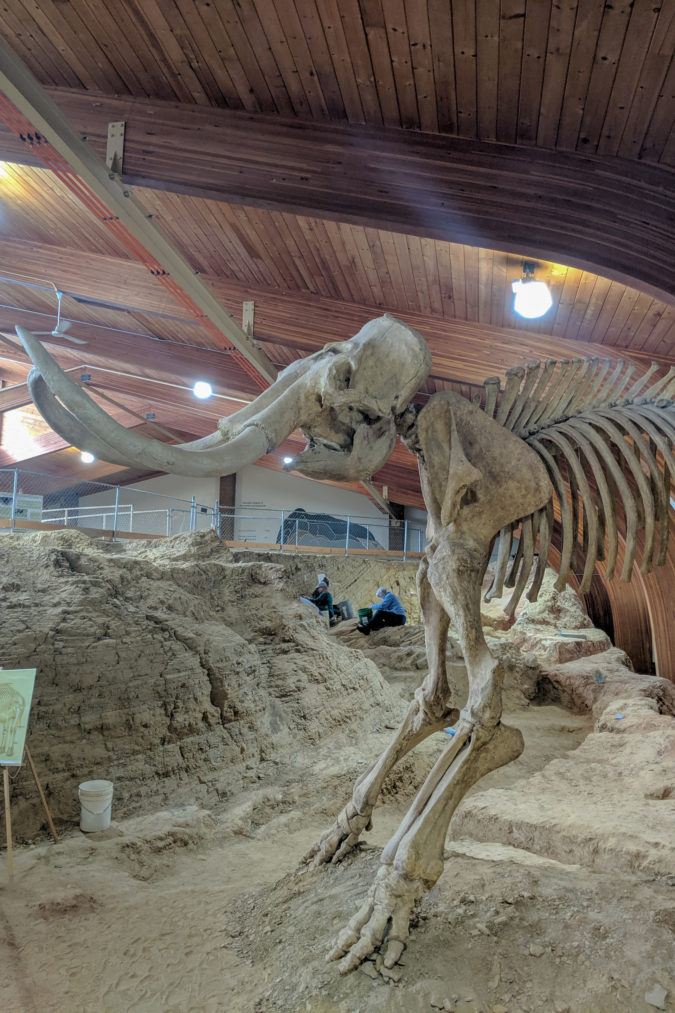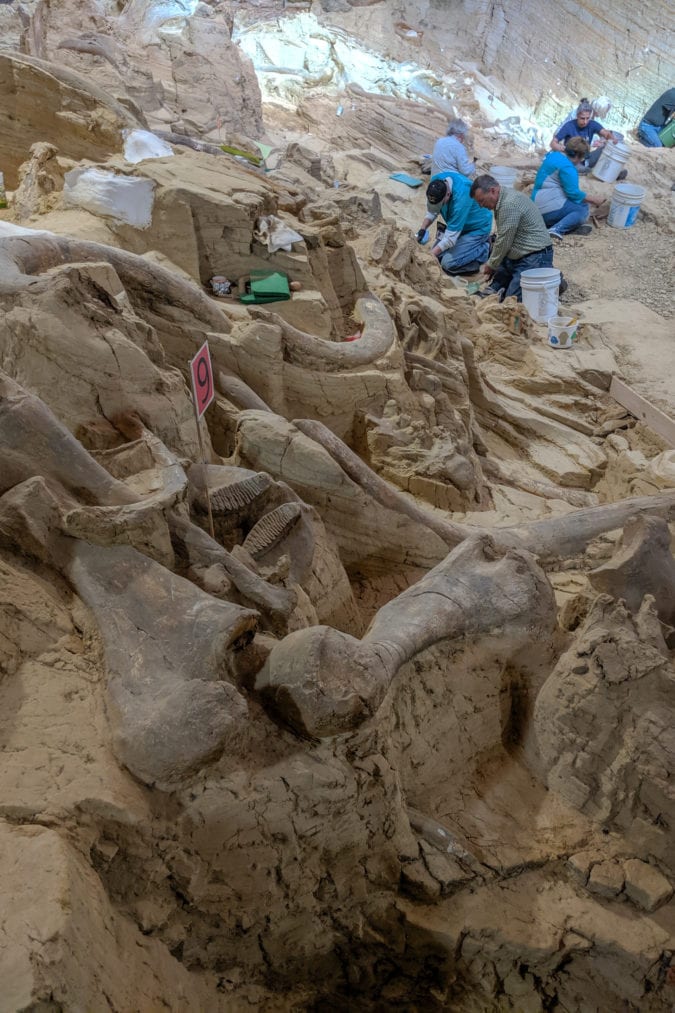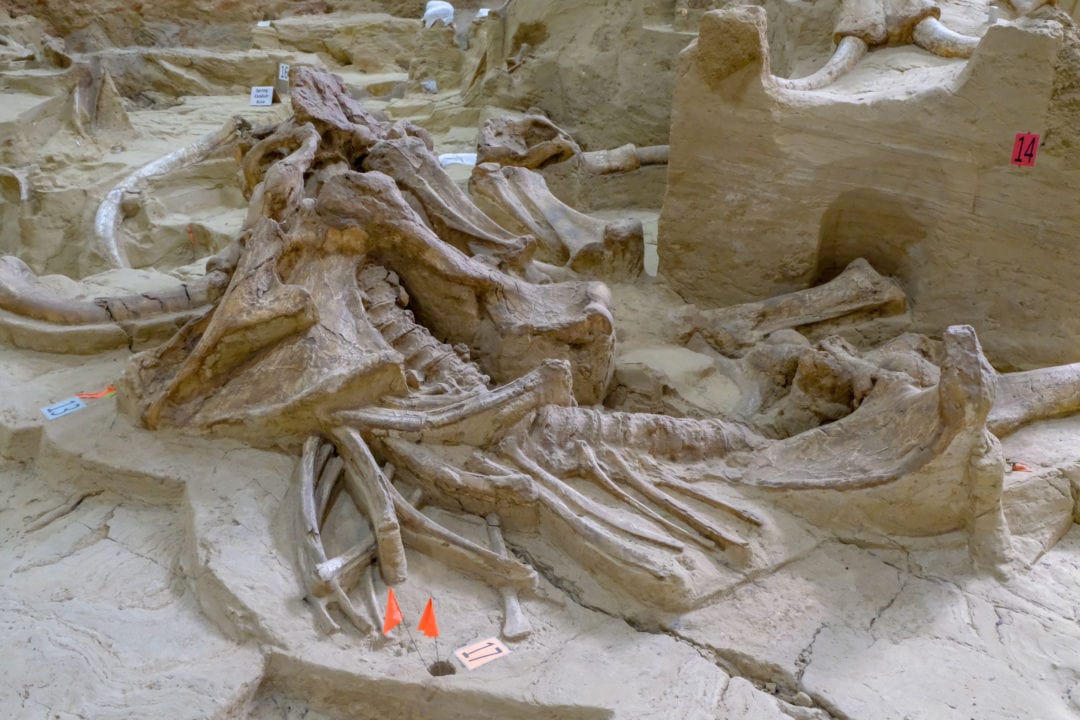In a classic scene from the original Jurassic Park film, the audience first meets paleontologists Alan Grant and Ellie Sattler as they’re excavating a dinosaur skeleton somewhere in Montana. The camera follows the hands of the diggers as they gently brush and scoop loose sand away from complete, pristine bones, laid out exactly like the animal’s skeleton was in life. It’s practically museum-ready, no need for glue or additional cleaning, just set it upright and wait for the crowds.

As a paleontologist, that scene makes me giggle every time I see it, and one trip to the Mammoth Site of Hot Springs, South Dakota, will show you why.
Today, the biggest living creatures roaming the Black Hills are bison; they’re plenty wild and woolly, but these hills used to be the stomping grounds of something even wilder and woollier: mammoths. They were drawn to the warm waters of the natural hot springs found in the area. Unfortunately, one of these spring-fed ponds turned out to be a death-trap for more than 60 male mammoths; once they entered the water, the sides of the sinkhole were too slippery for such large creatures to climb back out. Over time, their skeletons piled up and the shaft of the sinkhole eventually filled in.

The site’s geologists have figured out that the sinkhole was originally about 65 feet deep.
One of the least glamorous parts of a thorough excavation is screen-washing, where bucket after bucket of dirt is rinsed through a screen until only small bits of rock, bone, and teeth are left behind. What remains is then picked through for tiny fossils of small mammals—rodents and rabbits—that also met their end in the sinkhole.

Some of this picking happens downstairs, in the Mammoth Site’s fossil preparation lab. A short elevator ride down to the museum’s lower floor reveals the part of paleontology most people don’t think about when they see a beautifully complete mounted skeleton in a museum. After leaving the elevator, I’m greeted by a wall of windows. Here, visitors can peer into the lab as bits of bone are painstakingly cleaned and glued back together, like putting together a puzzle where half of the pieces are broken or missing.

A wall-mounted TV plays a video of the site’s molding and casting process. Silicone rubber is used to make an exact mold of a fossil. That mold can then be used to create replicas (called casts) of the bone, which are often what ends up mounted in museums. Fossils are fragile and irreplaceable, so it’s safer to work with the casts.
The people who work in these spaces are the unsung heroes of paleontology, painstakingly bringing ancient bones back to life. While a lot of museums are starting to pull back the curtain on what it takes to prepare a fossil when it comes in from the field by building these kinds of “fishbowl” lab spaces, the Mammoth Site is a rare destination because the fossils are being both excavated and pieced back together inside the same building.

The Mammoth Site of Hot Springs, South Dakota, is open year-round (except for New Year’s Day, Easter, Thanksgiving, and Christmas). Hours vary by season. The site only offers guided tours, so be sure to arrive before the last tour begins.





